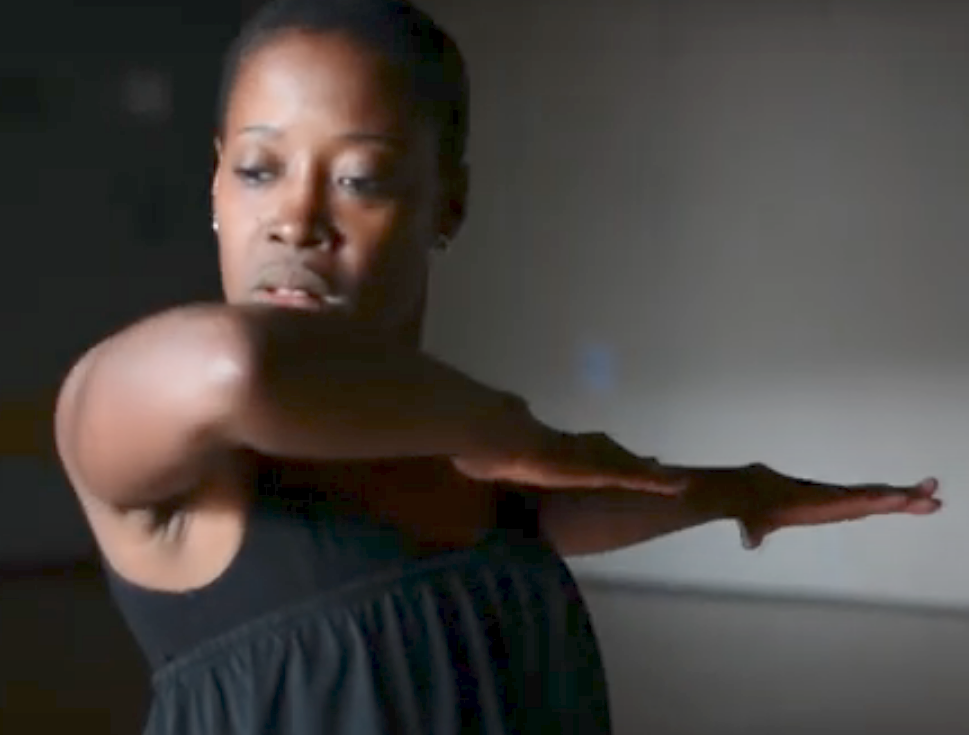Simone Blais throws a light on Black dance community in Dance Like Everybody's Watching
Victoria artist’s film tackles appropriation and racism, while celebrating movement
A still from Dance Like Everybody’s Watching.
Filmmaker Simone Blais
VIFF connect presents Dance Like Everybody’s Watching as part of the Canadian Resistance program, streaming with the Black History Month series until March 4
DANCE ARTIST and filmmaker Simone Blais recalls her move to Victoria in 2014 for studies at UVic as a culture shock.
As a mixed-race person with Afro-Trinidadian and Métis roots, she found the city overwhelmingly white. It would send her on a quest to find the Black artistic community she knew must exist in the city—a search that plays out in her 45-minute documentary Dance Like Everybody’s Watching.
She’s created a mix of interviews with local Black artists and vividly shot dance sequences—on the waterfront and in apartments and studios, and across flamenco, dancehall, and hip-hop. The film gives voice to a rich cultural community that rarely takes the spotlight in a city named for a colonial queen.
“I grew up in downtown Toronto in a mixed household and a very diverse neighbourhood,” Blais says, speaking to Stir from the provincial capital, where she’s feeling a lot more connected these days. That’s a contrast to what she recalls of her arrival at UVic: “The first class had 200 people in the audience and I was the only visibly brown face,” she says. “So that’s when I became more aware of it, and I was already interested in activism work and racial activism.”
The idea for her film took more shape when she enrolled in dance classes in her new home city. In Toronto, Blais had taken a somewhat conventional route into the art form, starting with intensive Irish dance from childhood, leading to ballet, jazz, and contemporary training. In BC, she started noticing the racial dynamics in a class she was taking in Zumba—a form that draws on African dance for its hyperenergized workouts to music. She loved doing it, she admits. But it also left her with some hard questions.
“There were some dances we were doing that were clearly inspired by the West African style of dance, and all of a sudden I’m in kind of an all-white class with a white instructor, and something in my body felt weird and wrong about doing it in this context,” she explains in the same thoughtful and open manner she addresses similar issues in the film. “They [the dances] were stripped of their story and their context and what they meant to the community that created them, and instead it was just a fun workout.”
Blais came up with the idea of making a film examining cultural appropriation in dance, as well as talking to three of the city’s Black dancers about some of the stereotyping and racism they’ve experienced. She applied for the $50,000 Telus Storyhive competition and won, beating out more than 300 other applicants to produce a documentary.
“It was definitely a leap,” she says with a laugh. “I just decided to go for it.”
The film is vividly shot, as she visits Victoria dance artists Kemi Craig, Jasmine Bailey, and Teri Ejere. Together, they say a lot about the power of dance as the embodiment of culture and identity—not just through their words but through their movement sequences. The documentary also follows Blais’s own personal journey: we see her having conversations with her mother and sister, and unpacking her own complicated feelings around such issues as white-run African-dance studios.
“We were really building community as we were filming it, and creating new relationships,” she says of the shoot in Victoria. “There is community already and we’ve continued to build it by making the film.”
In many ways, Blais’s documentary has helped make a previously invisible scene visible.
These days, Blais has settled into her new home city, having finished her degree in Gender Studies and Indigenous Studies, and also training as a doula who specializes in working with the BIPOC community.
As her film reaches a wider audience through VIFF Connects—part of a Black History Month program curated by Vancouver’s Nya Lewis—she reflects that her initial target audience for Dance Like Everybody’s Watching was primarily dancers. She saw it “as something they could use as a jumping off point to have some of these tough conversations.”
But in these times of heightened awareness around racism, she is aiming to open the eyes of a wider audience, too.
“I hope everybody is able to see themselves in the film in one character or another,” she says. “One take away I would love is the impact that actions could have on Black communities, even if they’re with good intentions. Often people who create tense racial dynamics for Black people are lovely people and mean the absolute best. But it’s important to reflect on their own role that they play.”















